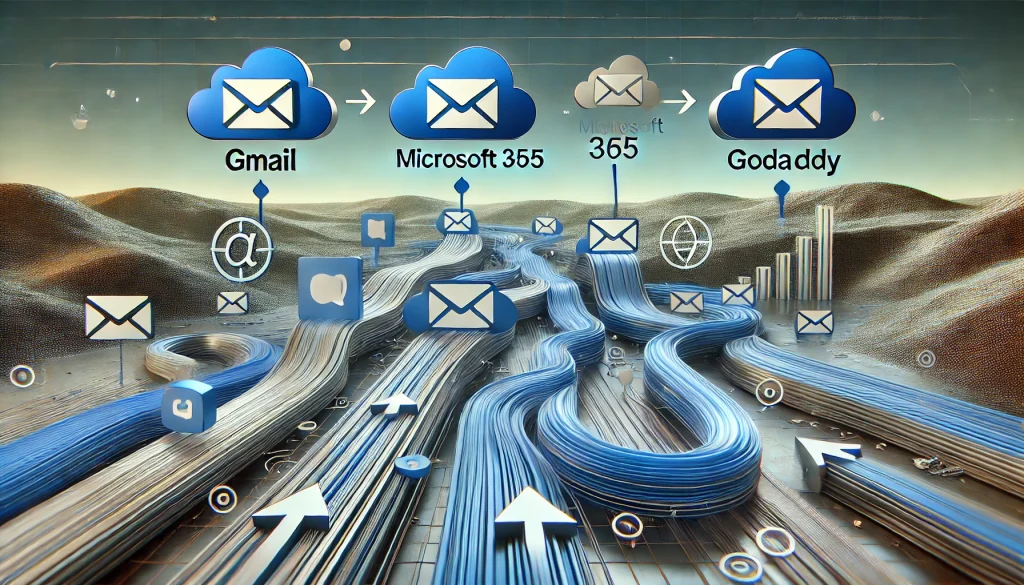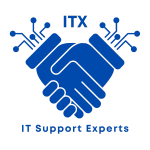Email Migration Service: A Guide to Seamless Transition
Email Migration Service
Migrating emails from one platform to another can be a daunting task for businesses. Whether you’re upgrading to Microsoft 365, transitioning to Google Workspace, or moving from a hosting provider like GoDaddy, the need for a seamless process cannot be overstated. ITX ensures your data moves efficiently and without interruptions, minimizing downtime and maintaining productivity.
In this article, we’ll explore what email migration service entail, key considerations for different platforms, and answer common questions regarding popular services like GoDaddy, Microsoft 365, and Google Workspace. By the end, you’ll clearly understand how email migration works and what steps you can take to ensure a smooth transition for your business.
What Are Email Migration Services?
Migration services involve moving your entire email system, including messages, calendars, contacts, and tasks, from one email platform to another. Companies often switch platforms due to scalability, better features, enhanced security, or more efficient integration with their existing software stack.
Migrating emails can be complicated, especially when moving large amounts of data, but migration services handle the technical complexity for you. These services manage everything, from the initial backup of your email data to reconfiguring mail clients post-migration.

Key Components of Email Migration
- Data Backup and Validation: Ensuring all email data, including messages and attachments, is securely backed up.
- Platform Compatibility Check: Making sure the destination platform supports the formats of the email data being transferred.
- DNS and MX Record Updates: Changing domain settings to route emails to the new platform.
- User Training and Support: Providing guidance to employees on using the new platform efficiently post-migration.
Each migration may be unique depending on the size of your organization, email client, and server configurations. The key is to understand that even though gmail migration services simplify the process, thorough planning is essential to avoid errors and data loss.
Types of Email Migrations
Not all email migrations are the same. Depending on your existing and desired platform, the process can vary significantly. Let’s discuss some of the most common types of migrations:
1. IMAP Migration
IMAP (Internet Message Access Protocol) migration is the most widely used migration type. It is useful for moving emails between different servers, such as moving from a GoDaddy email to Google Workspace or Microsoft 365. It ensures emails and folders remain intact during the transfer.
2. Cutover Migration
A cutover migration moves all your emails and mailboxes at once, making it ideal for smaller businesses that need to move to platforms like Microsoft 365 quickly. The downside is the potential for downtime as all users are migrated simultaneously.
3. Staged Migration
This type of migration is useful for larger organizations with hundreds or thousands of mailboxes. It allows a business to move users in batches over time, making it easier to manage and reducing the risk of overwhelming the IT team.
4. Hybrid Migration
For organizations already using Microsoft Exchange, hybrid migration allows them to migrate their mailboxes to Microsoft 365 gradually. This ensures minimal downtime and gives users the ability to work on both platforms until the migration is complete.
Steps for Successful Migration
Migrating your emails successfully requires a well-defined plan. Here’s a step-by-step guide to help you understand what the process involves:
Step 1: Assess Your Current Email System
Before initiating the migration, it’s important to assess your current system, including storage usage, folder hierarchy, and any custom settings. Understanding these parameters will help ensure nothing gets lost in the transfer.
Step 2: Choose the Right Migration Method
Depending on the size of your organization, the email platform you’re moving from, and the destination platform, choosing the right migration type is crucial. An IMAP migration might work for smaller businesses, while hybrid migrations are better for large enterprises.
Step 3: Backup Your Email Data
Though most migration services ensure data integrity, backing up your emails, contacts, and calendars is an important step. This allows you to safeguard your data in case anything goes wrong during the transition.
Step 4: Configure DNS and MX Records
DNS and MX records need to be updated to point to the new email platform. This ensures that incoming emails are delivered to the new mailboxes rather than the old ones. While this might sound technical, your migration provider usually handles this.
Step 5: Conduct a Pilot Migration
It’s always best to test the migration with a smaller set of users first. This way, you can identify any issues before moving the entire organization.
Step 6: Migrate the Remaining Mailboxes
Once the pilot migration is successful, you can proceed to migrate the remaining users. A phased or staged approach might be necessary for larger organizations to ensure minimal disruption.
Step 7: Post-Migration Cleanup and Testing
After the migration is complete, ensure everything is working as expected by testing each mailbox. It’s also essential to conduct a cleanup process to remove any redundant data from the old platform and ensure email clients are configured correctly.
Step 8: Provide Training and Support
Once your team has been migrated, ensure they know how to use the new system effectively. Provide user training and make sure helpdesk support is available for any technical issues that may arise.
Migration Services for Different Platforms
1. GoDaddy to Google Workspace
Migrating from GoDaddy to Google Workspace is straightforward if done correctly. The process typically uses IMAP migration to transfer data, though you’ll need to update your domain’s MX records. Additionally, Google offers a migration tool that helps streamline the process, especially for small to medium-sized businesses.
2. Microsoft 365 Migration
Microsoft 365 offers a range of migration options, including cutover, staged, and hybrid migrations. Whether you’re moving from a legacy on-premise Exchange server or another cloud-based email provider, Microsoft 365 migration services ensure that the transfer is smooth and well-optimized for business continuity.
3. Google Workspace to Microsoft 365
Switching from Google Workspace to Microsoft 365 might be necessary for businesses looking for better integration with Microsoft’s suite of tools, such as SharePoint and Teams. The process typically involves migrating emails, contacts, and calendars, and setting up users on Microsoft Outlook.
4. On-Premise to Cloud Migration
For businesses moving from an on-premise email solution to a cloud-based service like Microsoft 365 or Google Workspace, we ensure that the transition is secure, compliant, and designed to scale with your organization’s future growth.
5. GoDaddy to Microsoft 365
GoDaddy offers an easy transition to Microsoft 365, especially if you’ve already registered your domain through GoDaddy. Using their built-in tools, email migration can be completed with minimal downtime and disruption to business operations.

Common Questions About Email Migration
Q1: Can I migrate emails from GoDaddy to Microsoft 365 easily?
Yes, GoDaddy provides built-in tools to help you migrate your emails to Microsoft 365. With proper DNS and MX record configuration, the process can be completed efficiently.
Q2: What is the best method to migrate from Google Workspace to Microsoft 365?
The best method depends on your organization’s size. A staged or hybrid migration is ideal for larger organizations, while a cutover migration may work better for smaller businesses.
Q3: How do I back up emails before migrating from Microsoft 365 to Google Workspace?
You can use third-party backup tools to create a full backup of your emails, calendars, and contacts before starting the migration. This ensures that all your data is protected in case of any unforeseen issues.
Q4: What should I do if I encounter downtime during migration?
If downtime occurs, it’s best to reach out to your professional migration service provider immediately. Most services are designed to minimize disruptions, but having a contingency plan is important.
Q5: Can I migrate emails myself or should I hire a professional service?
For smaller businesses with minimal data, self-migration might be possible using tools provided by the platform. However, for larger migrations or more complex environments, it’s recommended to hire professional migration services to ensure a smooth transition.
Conclusion
Migrating your email system to a new platform is a complex process, but it’s essential for improving productivity, integrating better tools, and scaling your business. Whether you’re moving to Microsoft 365, Google Workspace, or from GoDaddy to another provider, understanding the migration process and utilizing IT pro’s services can make the transition seamless and stress-free. By following best practices and ensuring the proper configuration, you can minimize downtime, protect your data, and ensure your team is up and running as quickly as possible.
Make sure to consider your specific business needs when planning a migration, and don’t hesitate to seek professional assistance if necessary. A well-executed email migration sets the foundation for more efficient communication and collaboration across your organization.



